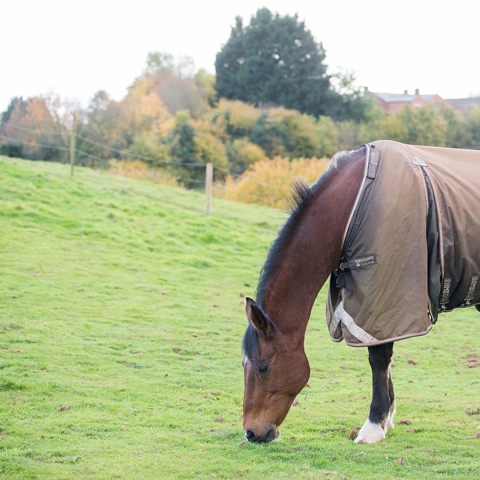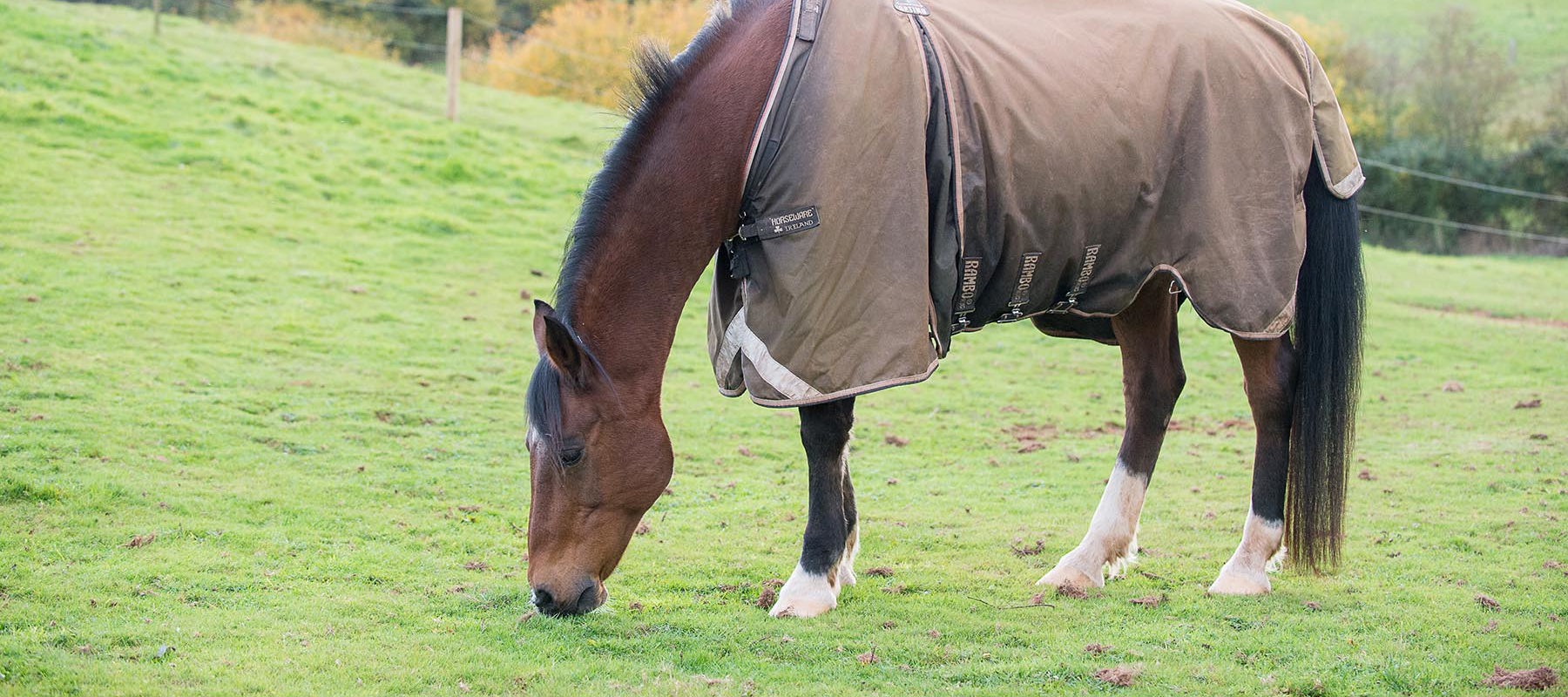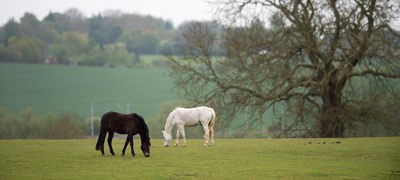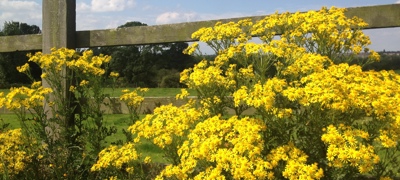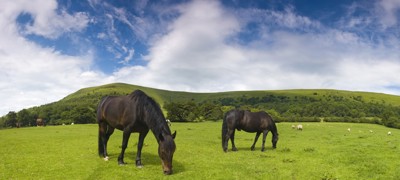It's important to take measures to maintain the quality of the grass and soil, keep a flat and safe surface, and remove any unwanted or poisonous plants.
Fertilising
Fertilising helps to replace and improve the nutrient content of the grassland and soil, promoting plant growth. Nutrition loss can be caused by poor weather, soil type, using grassland for hay/haylage or overuse of the land.
There are two types of fertilisers:
- Inorganic Fertilisers contain chemicals that can immediately provide the essential nutrients plants need
- Organic fertilisers release nutrients more slowly, over longer periods and also improve the soil composition1. Never apply horse manure because of the risk of introducing equine worm larvae
If you are planning to fertilise:
- Take care not to over-fertilise, as this can cause problems with excessive growth of lush grass, unsuitable for managing good-doers, overweight horses and those prone to laminitis.
- Do a soil analysis every 3-5 years as this helps you monitor the soil quality and decide what fertiliser to add1. While you can test soil at any time, the best time is spring or autumn and not within three months of applying lime or fertiliser.
- Seek expert advice from a reputable contractor regarding any use of fertiliser.
Closed period for applying fertilisers
chevron-down
chevron-up
Be aware that there is a closed period when applying organic and inorganic fertilisers is prohibited. More guidance can be found in the links below:
- England: Gov.uk Cross Compliance
- Northern Ireland: Daera Cross Compliance
- Scotland: Gov.scot Cross Compliance
- Wales: Gov.wales Cross Compliance
Rotational grazing
Rotational grazing involves moving horses between pastures during the grazing season to allow for periods of rest and regrowth.
If you have additional acreage available, this is a great method of grassland management, with research suggesting a greater pasture quality in spring after winter rest2.
Reseeding
Reseeding can be beneficial around areas that have become poached and boggy through the winter, for example, around gateways.
However, keep in mind:
- A large amount of reseeding is not advised as this can damage grass roots.
- Reseeding is best done in the spring for optimum grass growth.
- Horses should not graze young grass until it is well established with a strong root system, ideally being five to six inches long before it is grazed.
Choosing your seeds
chevron-down
chevron-up
When choosing the ideal grasses, consider hardier grasses with a denser root that can cope with the disturbance horses can cause. Also, think about balancing the nutritional content and taste by mixing grasses and herbs.
The following grasses are of great value:
- Smooth meadow grass
- Creeping red fescues
- Chewing fescue
- Sheep’s fescue
- Tall fescue
- White clover (in small quantities as it has a high nitrogen content).
Horses relish herbs, which provide nutrients often lacking in more shallow-rooted grass species. You may want to consider:
- Narrow-leaved plantain
- Yarrow
- Dandelion
- Chicory
- Chicory
- Ribwort
- Burnet
Rolling
Rolling flattens areas that may have become poached and boggy through the winter. Rolling can also be used to embed new grass seeds following reseeding.
Weed management
Weed management is important as horses tend not to eat weeds, so they can reduce the amount of good quality grass. Common weeds include docks, nettles and thistles. Weeds are best dealt with when in leaf, as they will be most vulnerable at this stage.
Hand pulling or spot spraying
chevron-down
chevron-up
If cross grazing is not practised, hand pulling or spot spraying is best to target small specific areas, as this will cause less disturbance to the grassland.
- A contractor should be used to spray any large areas of weed contamination.
- Spraying is best done during a dry period just before rain, as the weeds will absorb the moisture.
- Don’t put horses on the pasture until weeds begin to wilt - seek expert advice if there is a heavy infestation.
Please note: purchase of herbicides and the spraying of them is controlled by legislation – users need a Certificate of Competence in the Safe use of Pesticides to purchase the herbicides.
Cross Grazing
chevron-down
chevron-up
Unlike horses, cattle and sheep are not selective grazers and therefore grazing them together can be beneficial in:
- Grazing down weeds and rough grass that horses avoid
- Levelling out the damage caused by horses’ hooves
- Controlling the amount of grass available during the spring and summer months
- Breaking the worm cycle as sheep/cattle ingest equine parasites halting their lifecycle without adversely affecting those animals.
However, all animals on the land will need a worming programme for their welfare and boundaries must be safe and suitable for all the animals if you decide to cross graze.
Harrowing
Harrowing can be useful for removing dead grass from the base of healthy grass, levelling uneven ground and helping to remove lightly rooted weeds.
However, there are factors to consider when deciding whether or not to harrow your fields:
- Harrowing should not replace the removal of droppings as this can risk spreading parasites across the pasture
- If sycamore trees surround the field, harrowing should be avoided in the spring and autumn, as this can spread the seedlings and seeds across the pasture. The consumption of the seeds and seedlings has been linked to causing atypical myopathy.
Topping
Topping your pasture prevents weeds from going to seed and spreading and minimises the chance of the grass becoming too long and unpalatable.
Do not top ragwort or foxglove as these become more palatable to horses when dried but retain their toxicity.
Resources
chevron-down
chevron-up
1) Equine Permaculture. 2020. All about soil- Part 5 Using soil tests to improve horse pasture. Available from: https://equinepermaculture.com/blog/2020/03/11/all-about-soil-part-5-using-soil-tests-to-improve-horse-pastures/
2) Weinert, J. R & Williams, C.A. 2018. Recovery of Pasture Forage Production Following Winter Rest in Continuous and Rotational Horse Grazing Systems. Journal of Equine Veterinary Science. Volume 70. Pages 32-37.
3) Equiculture - https://www.equiculture.net

